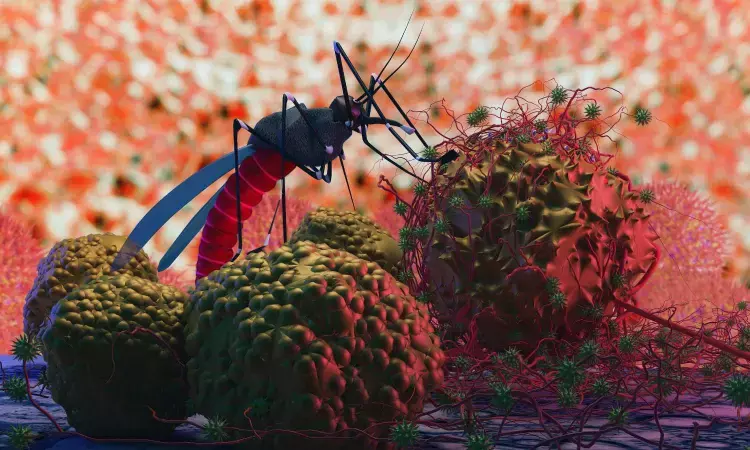- Home
- Medical news & Guidelines
- Anesthesiology
- Cardiology and CTVS
- Critical Care
- Dentistry
- Dermatology
- Diabetes and Endocrinology
- ENT
- Gastroenterology
- Medicine
- Nephrology
- Neurology
- Obstretics-Gynaecology
- Oncology
- Ophthalmology
- Orthopaedics
- Pediatrics-Neonatology
- Psychiatry
- Pulmonology
- Radiology
- Surgery
- Urology
- Laboratory Medicine
- Diet
- Nursing
- Paramedical
- Physiotherapy
- Health news
- Fact Check
- Bone Health Fact Check
- Brain Health Fact Check
- Cancer Related Fact Check
- Child Care Fact Check
- Dental and oral health fact check
- Diabetes and metabolic health fact check
- Diet and Nutrition Fact Check
- Eye and ENT Care Fact Check
- Fitness fact check
- Gut health fact check
- Heart health fact check
- Kidney health fact check
- Medical education fact check
- Men's health fact check
- Respiratory fact check
- Skin and hair care fact check
- Vaccine and Immunization fact check
- Women's health fact check
- AYUSH
- State News
- Andaman and Nicobar Islands
- Andhra Pradesh
- Arunachal Pradesh
- Assam
- Bihar
- Chandigarh
- Chattisgarh
- Dadra and Nagar Haveli
- Daman and Diu
- Delhi
- Goa
- Gujarat
- Haryana
- Himachal Pradesh
- Jammu & Kashmir
- Jharkhand
- Karnataka
- Kerala
- Ladakh
- Lakshadweep
- Madhya Pradesh
- Maharashtra
- Manipur
- Meghalaya
- Mizoram
- Nagaland
- Odisha
- Puducherry
- Punjab
- Rajasthan
- Sikkim
- Tamil Nadu
- Telangana
- Tripura
- Uttar Pradesh
- Uttrakhand
- West Bengal
- Medical Education
- Industry
Malaria can now be detected by needle-free light beam

Researchers at University of Queensland have developed a fast, needle-free malaria detection tool that could help save hundreds of thousands of lives annually. According to research team this technology would revolutionise how malaria is fought globally.
Malaria is usually detected by a blood test, but scientists have devised a method using a device that shines a beam of harmless infrared light on a person's ear or finger for five-to-10 seconds, it collects an infrared signature that is processed by a computer algorithm.
"Currently it's incredibly challenging to test large groups of people, such as the population of a village or town-you have to take blood from everyone and mix it with a reagent to get a result," Dr Lord said.
"But with this tool we can find out very quickly whether a whole village or town is suffering from, or carrying, malaria.
"The technique is chemical-free, needle-free and detects malaria through the skin using infrared-light-it's literally just a flash on a person's skin and it's done.
"The device is smart-phone operated, so results are acquired in real time."
The researchers believe the technology is the first step to eliminating malaria.
"According to the World Health Organisation malaria report, in 2020 there were an estimated 241 million cases worldwide and more than 600,000 died from malaria," Dr Lord said.
"Most of the cases are in sub-Saharan Africa, where 90 per cent of deaths are children under five years old.
"The biggest challenge in eliminating the disease is the presence of asymptomatic people in a population who act as a reservoir for transmission by mosquitos.
"The World Health Organisation has proposed large-scale surveillance in endemic areas and this non-invasive, affordable and rapid tool offers a way to achieve that."
The technology could also help tackle other diseases.
"We've successfully used this technology on mosquitoes to non-invasively detect infections such as malaria, Zika and dengue," Dr Lord said.
"In our post-COVID world, it could be used to better tackle diseases as people move around the globe.
"We hope the tool could be used at ports of entry to screen travellers, minimising the re-introduction of diseases and reducing global outbreaks.
"It's still early days, but this proof-of-concept is exciting."
The research is published in PNAS Nexus.
Reference:
Gabriela A Garcia, Tharanga N Kariyawasam, Anton R Lord, Cristiano Fernandes da Costa, Lana Bitencourt Chaves, Josué da Costa Lima-Junior, Rafael Freitas, Maggy T Sikulu-Lord. Malaria absorption peaks acquired through the skin of patients with infrared light can detect patients with varying parasitemia. PNAS Nexus, 2022; DOI: 10.1093/pnasnexus/pgac272
Dr Kamal Kant Kohli-MBBS, DTCD- a chest specialist with more than 30 years of practice and a flair for writing clinical articles, Dr Kamal Kant Kohli joined Medical Dialogues as a Chief Editor of Medical News. Besides writing articles, as an editor, he proofreads and verifies all the medical content published on Medical Dialogues including those coming from journals, studies,medical conferences,guidelines etc. Email: drkohli@medicaldialogues.in. Contact no. 011-43720751


